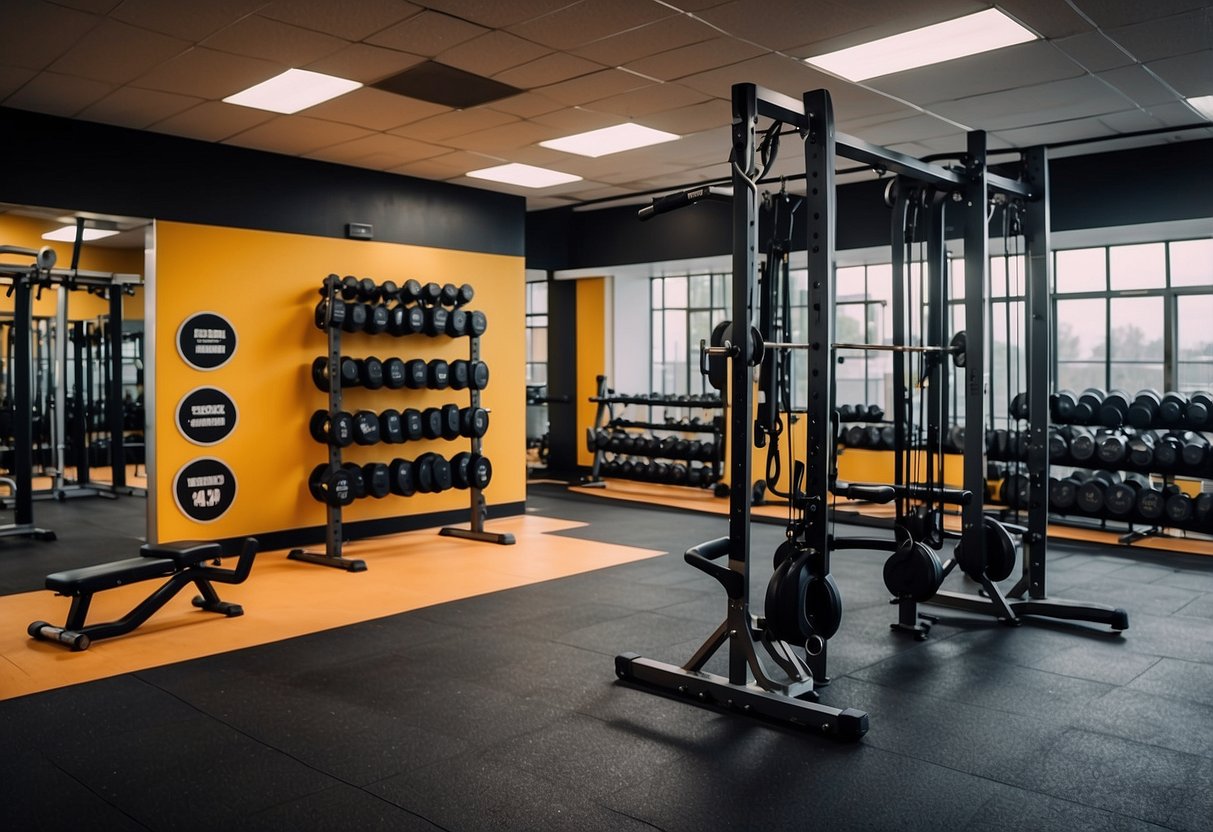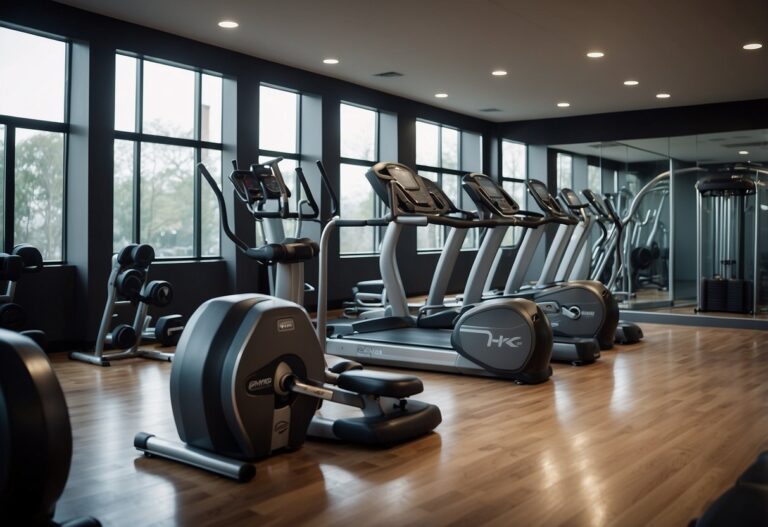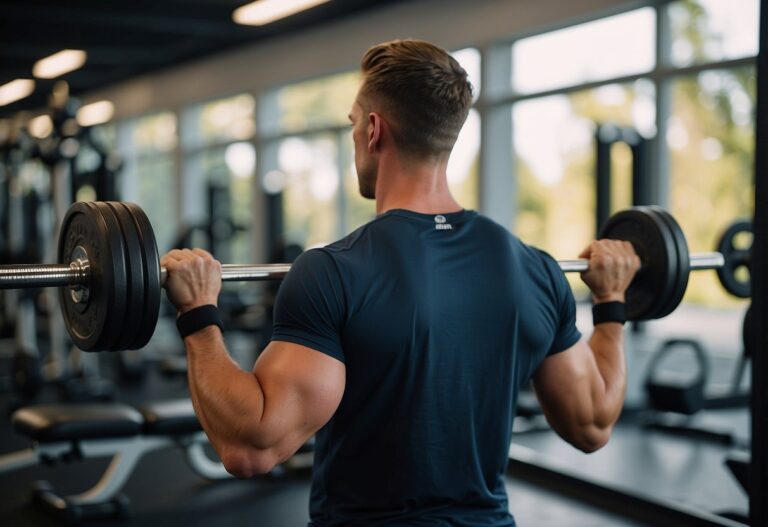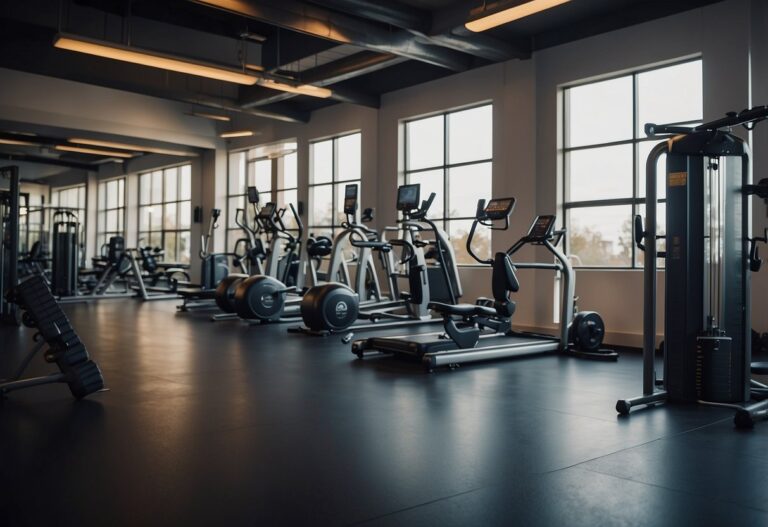Finding the right workout routine can be a game-changer for anyone. This is especially important for trans men looking to achieve their fitness goals.
Developing muscle tone and building strength not only improves physical health but also boosts confidence and helps with the overall transition process.
Have you ever wondered how to tailor your workout specifically to enhance masculine features?
Building the chest and shoulders effectively is also a common goal for many trans men.

Embarking on a fitness journey tailored for trans men requires knowledge about specific exercises and techniques that cater to your unique needs. The right tips can make a significant difference in achieving the desired body shape and ensuring each workout is both effective and safe.
So, whether you are new to fitness or looking to refine your routine, understanding what works best for your body will help you see the results you are aiming for in no time.
Understanding FTM Fitness
When it comes to FTM fitness, there are key areas you might focus on. These include achieving specific fitness goals and understanding changes in your body composition.
Common Fitness Goals
Many trans men aim to build muscle and achieve a more masculine physique. Some of the common fitness goals include developing muscle mass, enhancing upper body strength, and reducing body fat.
Focusing on chest exercises can help in developing a stronger, more defined chest. Exercises like the bench press are highly effective.
Incorporating shoulder workouts can give the appearance of broader shoulders, creating a more masculine form. Check out these shoulder exercises for more ideas.
Achieving a narrower waist is another common goal. This involves cardio workouts and core strengthening exercises to reduce fat and tone your midsection.
Your ultimate goal might also include improving endurance and overall fitness, which positively impacts both physical health and self-confidence.
Body Composition Changes
When transitioning, you might experience changes in body composition due to hormone therapy and exercise. Testosterone can increase muscle mass and reduce fat, which supports building a masculine form.
Strength training is key for enhancing muscle mass. Targeting different muscle groups ensures balanced muscle development.
For the chest, exercises like push-ups and dumbbell presses work well, even without equipment. Learn more about effective no-equipment chest exercises.
It’s important to be patient with these changes, as they can vary from person to person. Regular workouts combined with proper nutrition will help you track and achieve your fitness goals.
Strength Training for FTM Individuals
Strength training is essential for building muscle and boosting confidence for FTM individuals. It’s crucial to focus on specific exercises and consider the gym environment for a successful workout routine.
Effective Strength Workouts
Certain exercises are particularly beneficial for FTM individuals aiming to build muscle. Bench presses are excellent for targeting the chest.
Start with a weight that challenges you but allows you to maintain proper form. Gradually increase the weight as you get stronger.
Push-ups are another great exercise. They can be done in various ways, such as on your knees or inclined against a wall, to suit your fitness level. These build strength in your chest, shoulders, and triceps.
Planks are fantastic for core strength. Begin with a standard plank, holding it as long as possible. Once comfortable, try side planks for an added challenge.
These exercises don’t require equipment and are highly effective.
Navigating Gym Settings
Gyms can be intimidating, but finding the right one can make a big difference. Look for gyms known for being LGBTQ+ friendly. This kind of environment helps you feel more comfortable and accepted.
If possible, visit during off-peak hours. This reduces the anxiety of crowded spaces and allows more freedom to use equipment without feeling rushed.
Many gyms have trainers who can offer advice and monitor your form to prevent injury.
You might also want to explore gyms that offer personal training sessions. Personal trainers can provide tailored workouts and support.
Maintaining Motivation
Staying motivated to maintain a consistent workout routine can be challenging. Finding what works best for you and recognising your progress can make a significant difference.
Setting Realistic Goals
Setting achievable goals is crucial to stay motivated in your fitness journey.
Start by identifying specific targets that are both challenging and attainable. For example, aiming to increase your bench press weight by 5 kilograms in a month is more realistic than trying to double it.
Break down larger goals into smaller, manageable steps. Instead of saying, “I want to get fit,” choose specific actions like exercising three times a week.
This way, you can clearly see your progress and build confidence as you achieve each milestone.
Remember, it’s important to set deadlines for your goals. This helps maintain a sense of urgency and purpose.
Write down your goals and review them regularly to keep yourself accountable.
It’s also beneficial to share your goals with friends or family to get support and encouragement.
Tracking Progress
Regularly tracking your progress keeps you motivated by showing you how far you’ve come.
Start by keeping a workout journal where you log your exercises, weights, sets, and reps.
This written record allows you to see your improvements over time and reminds you of past successes during sluggish days.
Take progress photos at regular intervals, such as every month, to visually see changes in your physique.
Measurements of your body parts, like chest, waist, and arms, can also be tracked to give you concrete data.
Apps and online tools can automate this process. Use fitness apps that track your workouts and provide statistics on your performance.
This can help you identify trends and areas that may need adjustment, ensuring you stay on the right track.
Linking achievements and progress to rewards, like a new gym outfit, can also provide extra motivation to keep going.
Strength Training for Muscle Growth
When aiming to build muscle, focusing on strength training is crucial. Key exercises include bench presses, squats, and deadlifts.
These compound movements target multiple muscle groups at once, making them very effective.
Bench presses help develop a strong chest. Start with a weight that challenges you but allows you to keep good form. Ensure you feel the tension in your chest muscles as you press the weight up.
Squats are fantastic for your legs and core. Keeping your back straight, lower your body as if sitting in a chair, then push up through your heels.
This movement will help build your leg muscles and improve overall strength.
Keep track of your progress. Using a training log to record weights and reps can be motivational and helps track your gains.
Consistency is key, so stick to your routine and gradually increase the weights.
Cardio Workouts for Endurance
Building endurance through cardio workouts is key for any fitness routine. Activities like running, cycling, and swimming are great starting points.
Running can be done almost anywhere. Start with shorter distances and gradually increase your mileage.
Cycling offers a low-impact option. You can use a stationary bike or ride outdoors. It’s excellent for cardiovascular health.
Swimming provides a full-body workout. It’s also gentle on the joints. Try to swim for at least 30 minutes for the best results.
Incorporating HIIT (High-Intensity Interval Training) can boost your cardio workouts. Alternate between short bursts of intense activity and recovery periods.
Adding variety to your workouts keeps things interesting. Mix different cardio exercises to work out various muscle groups and stay motivated.
Functional Training
Functional training focuses on exercises that mimic real-life movements. These exercises often use multiple muscle groups.
This helps you improve your strength, balance, and coordination.
Think about activities like lifting groceries, climbing stairs, or playing sports. By doing functional training, you’ll feel more capable in your daily life.
For example, bodyweight squats can strengthen your legs just like climbing stairs does.
Core stability is vital in functional training. Exercises like planks and bridges help build a strong midsection. This foundation supports everything you do, from standing tall to sitting comfortably.
<
Bodyweight Exercises for Flexibility
Improving flexibility is key to a balanced fitness routine. Plus, you don’t need any equipment to do it.
Dynamic stretches are great for warming up. Leg swings and arm circles get your blood flowing and muscles prepped.
Static stretches like the hamstring stretch help increase flexibility. Hold each stretch for 20-30 seconds.
Incorporate yoga poses into your routine. Poses like Child’s Pose and Downward Dog are effective and easy to do anywhere.
Remember to breathe deeply during your stretches. This helps relax your muscles and improve your stretching.
Resistance Bands for Versatility

Resistance bands offer a flexible and convenient way to work out. They are lightweight and portable, so you can easily take them anywhere. This makes it easy to fit in a workout whether you’re at home, travelling, or in the gym.
Resistance bands are great because they can accommodate all fitness levels. Whether you are just starting or have been working out for years, you can find bands with different levels of resistance to suit your needs.
You can use resistance bands to target various muscle groups. For example, by stepping on the band and pulling it up, you can perform squats that help build leg strength.
If you’re interested, here is a helpful guide on the best band exercises to get started.
High-Intensity Interval Training (HIIT)
High-Intensity Interval Training, or HIIT, is a powerful way to boost your fitness. It involves short bursts of intense exercise followed by brief recovery periods.
During HIIT, you’ll push your body close to its limits. Typically, you work at 80-95% of your maximum heart rate during high-intensity intervals. This makes it a very efficient workout.
A common example of a HIIT workout is the 30-20-10 method. You do 30 seconds of low intensity, 20 seconds of moderate intensity, and 10 seconds of high intensity. Repeat this pattern for a set amount of time.
Sprint intervals are also popular in HIIT. You can sprint for 8-30 seconds and then jog or walk for a few minutes to recover. These intervals are repeated several times within the workout session.
For beginners, it’s important not to push too hard. Start with shorter intervals and gradually increase the intensity and duration.
Bodybuilding.com suggests adding more high-intensity intervals to your routine as you progress. Remember, the key is consistency and gradually challenging yourself.
Swimming for Full-Body Conditioning

Swimming is a fantastic way to work out your entire body. It is an excellent blend of cardio and strength training. The water resistance helps you build muscle while also being easy on your joints, making it a perfect exercise for a wide range of people.
When you swim, you engage multiple muscle groups simultaneously. Your arms, legs, and core all work together to propel you through the water. This full-body workout helps you build strength and endurance.
You might notice how swimming helps in toning muscles. The repetitive movements and resistance from the water can improve your muscle definition over time. Try incorporating different strokes like freestyle, breaststroke, and backstroke to work various muscles and keep your routine interesting.
Additionally, swimming is great for your cardiovascular health. It raises your heart rate without putting extra stress on your body. This can help improve your overall fitness and endurance.
If you’re looking to add swimming to your workout routine, start with short sessions and gradually increase your time in the pool. This will help you build stamina and get used to the movements.
Yoga for Balance and Core Strength

Yoga is fantastic for improving balance and strengthening your core. It’s gentle yet effective, making it great for individuals at any fitness level.
Half Moon Pose is excellent for balance. Stand on one leg, extend the other behind you, and reach forward. This move challenges your balance and engages your core.
Bird Dog Pose is another core-strengthening pose. On your hands and knees, extend one arm and the opposite leg. This pose improves stability and strengthens your deep core muscles.
A short yoga routine can be a perfect addition to your workout plan. Give these poses a try!
Pilates for Posture and Core Stability
Building a strong core is key for anyone, especially for you as an FTM. Pilates can help here.
You might try an eight-move core routine from a certified Pilates instructor. This can be done in just eight minutes with only a yoga mat needed.
Pilates is also perfect for beginners. You can follow a 20-minute deep-core workout to improve your posture and build your core strength. This routine is designed to increase your core stability, no matter your fitness level.
Don’t forget about lower-body muscles. A 7-move Pilates routine can help build your core strength and improve lower-body muscle without any weights.
Kettlebell Workouts for Power and Agility

Using kettlebells is a great way to boost your power and agility. These workouts are simple yet effective.
Start light and master basic movements before increasing the weight. This helps prevent injuries and ensures good form.
A core exercise to try is the kettlebell swing. It helps improve your hip thrust and builds explosive power.
Here’s how to do it: Stand with your feet shoulder-width apart, hold the kettlebell with both hands, swing it back between your legs, then thrust it forward to chest height.
Another excellent move is the kettlebell snatch. This full-body exercise increases agility and strength.
To do it, start with a loose grip, pull the kettlebell upwards in one smooth motion, and catch it overhead with your arm extended.
The kettlebell clean and press combines pulling and pressing movements, engaging many muscles.
Here’s how to do it: Hold the kettlebell in one hand, swing it to shoulder height, and then press it overhead.
Incorporate these exercises into your routine to improve functional strength. Always focus on form and control rather than lifting heavy weights.
Short but consistent practice leads to the best results.







